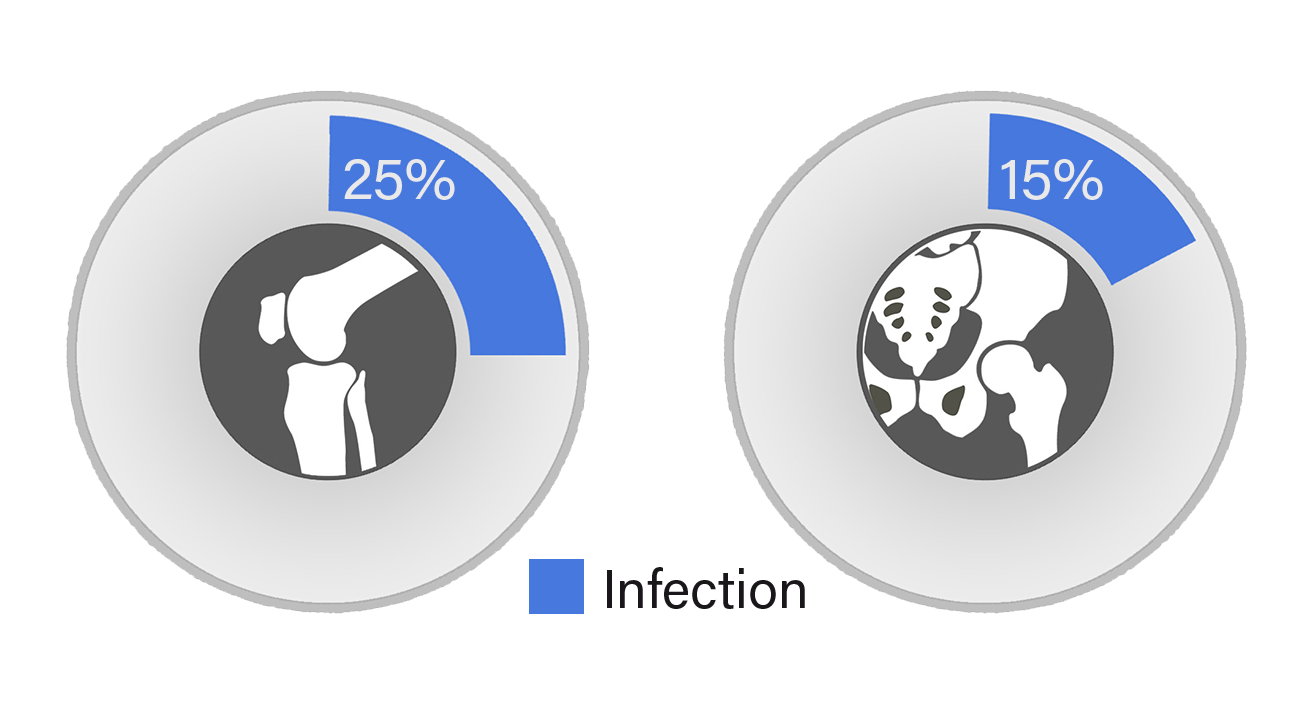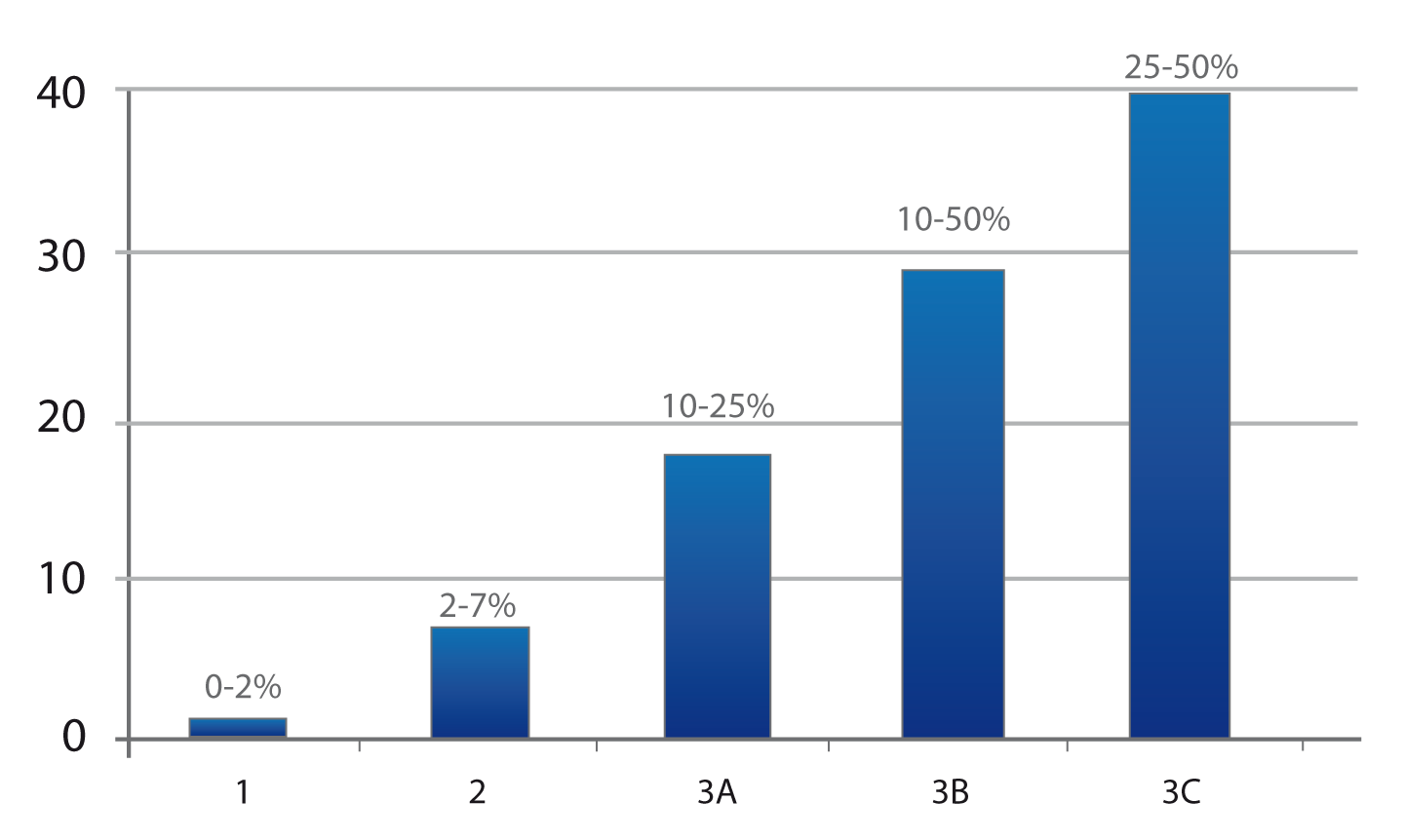The Burden of Infection
Despite the use of modern antiseptic techniques, it is still impossible to eliminate infections in operating theatres.
63% of surgical fields show some form of bacterial contamination. (1)
Percentage of bacteria contaminated Surgical Fields
JOINT RECONSTRUCTION
Bacterial infections associated with implanted biomaterials represent the most devastating complication in orthopaedics, and constitute the first reason for failure in primary knee replacement implants and third for hip replacement implants. (2, 3, 4, 5)

Hip and knee implants: the percentage of septic detachment compared to revision totals

TRAUMATOLOGY
Infection probability in function of the exposure severity
Incidence of infections in function of the degree of fracture exposure.
Gustilo Classification
Main risk factors (6,7,8,9)
General factors
• Intervention site: knee (2.5% – 5%), hip (1.5 – 2%)
• Co-morbid condition (renal insufficiency, diabetes, peripheral vascular disease, rheumatoid arthritis, malign tumours, etc.)
• Smoking, alcohol abuse, drug addiction.
• Malnutrition
• Obesity
• Immunosupression
• Corticosteroid treatment
• Dental, skin, urinary, and respiratory foci of infection
• Old age
Local factors
• Intervention type (reintervention, prolonged duration of surgical procedure, level of contamination/ pre-surgery exposure or pre-existent surgical site infection, etc.)
• Dental, skin, urinary, and respiratory foci of infection
• Pre-existent articular infiltration in same site.
REFERENCES
- Davis N, Curry A, Gambhir AK. et al. Intraoperative bacterial contamination in operations for joint replacement. JBJS (Br) 1999;81-B:886-9
- Australian National Joint Register 2012 Report
- Swedish National Joint Register 2012 Report
- Bozic KJ, Kurtz SM, Lau E. et al. The epidemiology of revision total hip arthroplasty in the United States. JBJS (Am) 2009;91:128-133
- Bozic KJ, Kurtz SM, Lau E. et al. The epidemiology of revision total knee arthroplasty in the United States. Clin Orthop Relat Res 2010;468: 45-51
- Bongartz T, Halligan CS, Osmon DR. et al. Incidence and risk factors of prosthetic joint infection after total hip or total knee replacement in patients with rheumatoid arthritis. Arthritis & Rheumatism 2008;59:1713-1720
- Iorio R, Williams KM, Marcantonio AJ. et al. Diabetes mellitus, hemoglobin A1C, and the incidence of total joint arthroplasty infection. J Arthroplasty 2012;27:726-729
- Kerkhoffs GMMJ, Servien E, Dunn W. et al. The influence of obesity on the complication rate and outcome of total knee arthroplasty. A meta-analysis and systematic literature review. JBJS (Am) 2012;94:1839-44
- Ragni MV, Crossett LS, Herndon JH. Postoperative infection following orthopaedic surgery in human immunodeficiency virus-infected hemophiliacs with CD$ counts ≤200/mm3. J Arthroplasty 1995;10:716-721
